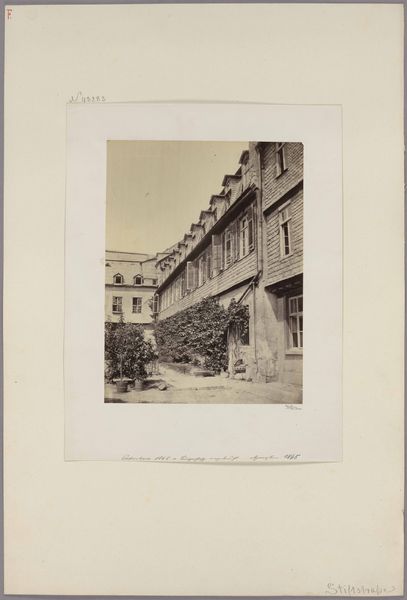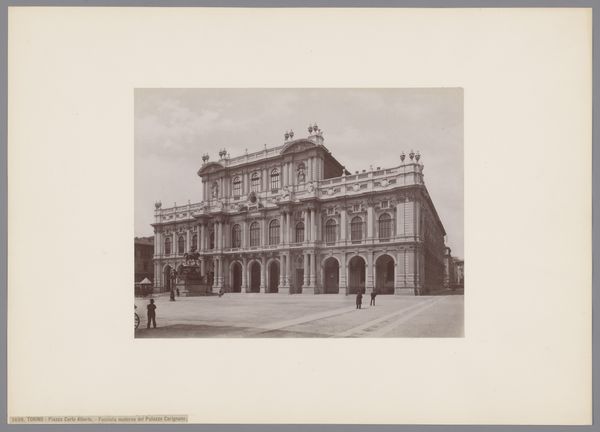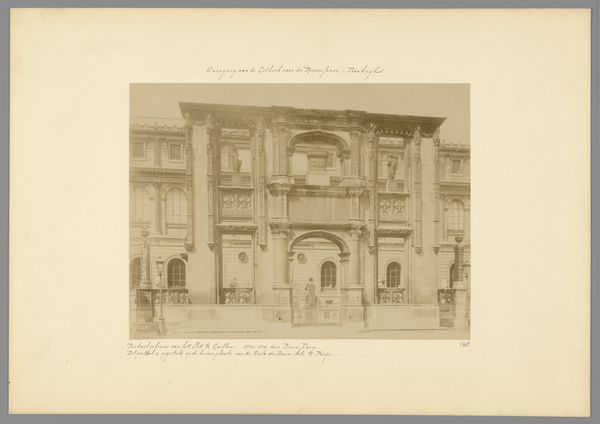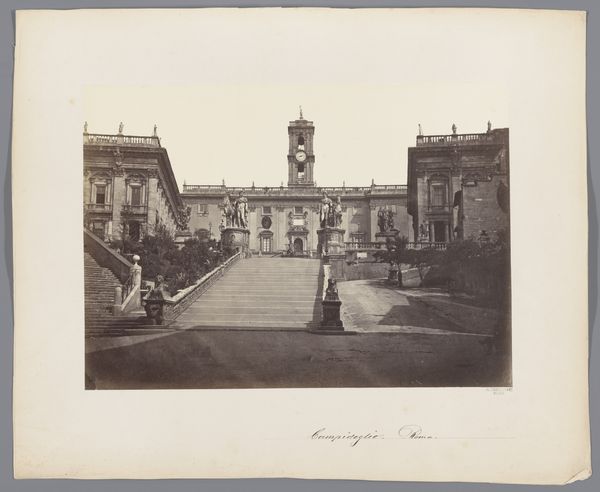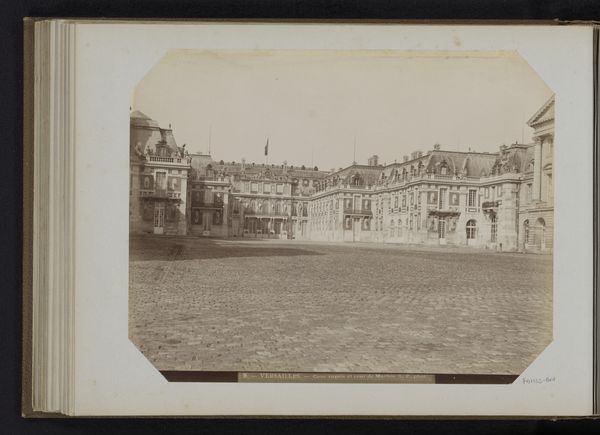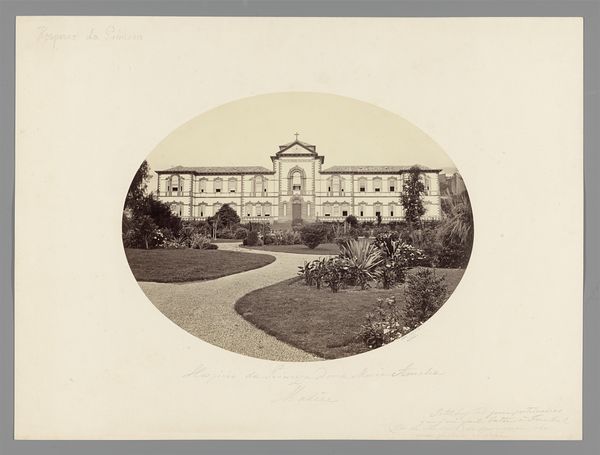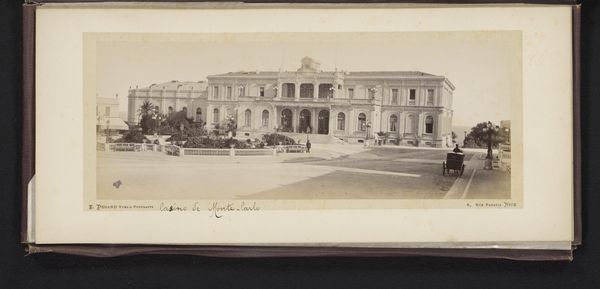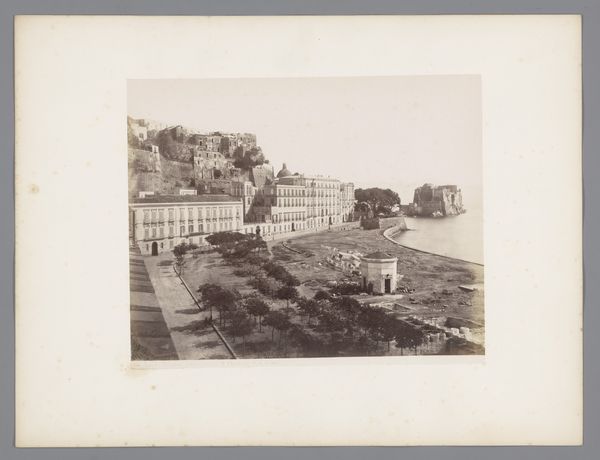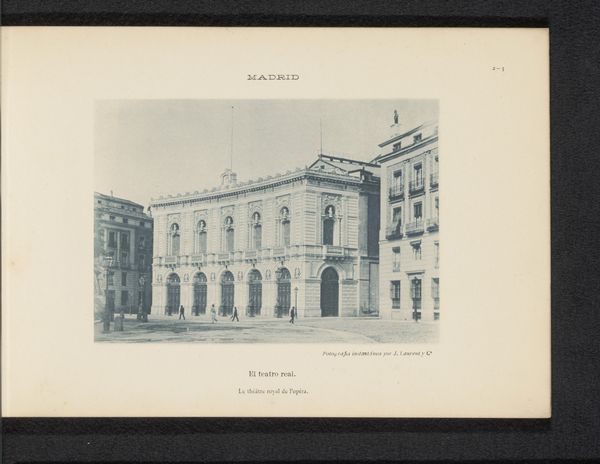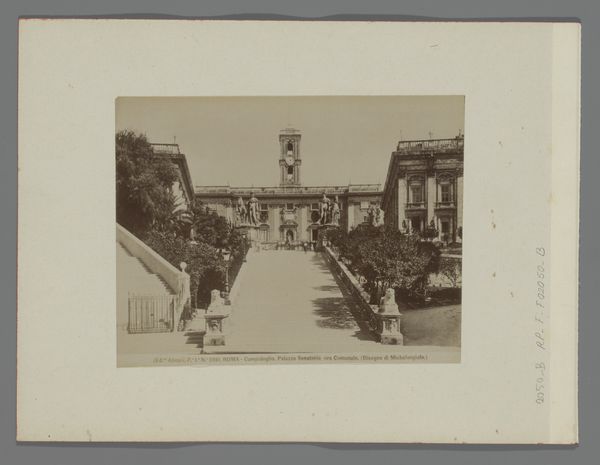
albumen-print, print, paper, photography, albumen-print, architecture
albumen-print
16_19th-century
landscape
paper
photography
albumen-print
architecture
Copyright: Public Domain
Editor: Here we have Giorgio Sommer's "Naples, Palazzo di Capodimonte," an albumen print dating from around 1861 to 1865. The scene feels quite staged, almost like a theatrical backdrop. What do you make of it? Curator: That sense of staging is quite astute. Photography in this period was heavily influenced by the aesthetics of painting and theatre, especially in how it presented architectural spaces. Sommer, like many photographers, was catering to a growing tourist market eager to capture and consume images of grand European sites. Editor: So it's less about capturing a slice of life and more about selling a romanticized vision? Curator: Precisely. The choice of the albumen print is telling. It allowed for sharp details and a wide tonal range, ideal for depicting the palace’s grandeur and the surrounding landscape in a way that would appeal to bourgeois sensibilities. How do you think the people are functioning within this composition? Editor: They look almost like props themselves, strategically placed to enhance the scene's sense of scale and to offer a glimpse of upper-class leisure. They don't seem naturally integrated into the space. Curator: You’re hitting on a crucial point. Consider the Palazzo di Capodimonte’s history, originally a royal residence and then a museum. Sommer’s image elides this complexity, presenting a sanitized version of power and privilege, marketed as a desirable memory. It reveals the politics of imagery, as well as photography’s influence on tourism and its effect of social and cultural perspectives during the period. Editor: That makes me see it in a completely different light. It's not just a pretty picture, it’s a constructed narrative about history and social class. Curator: Indeed. By looking at these seemingly objective depictions, we begin to realize just how deeply embedded the museum and social institutions affect the images they select. Editor: I hadn't considered the photograph itself as a historical artifact. Thanks, this was insightful.
Comments
No comments
Be the first to comment and join the conversation on the ultimate creative platform.
